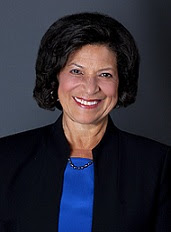
Brought to you by WBIW News and Network Indiana
Last updated on Tuesday, April 17, 2018
(UNDATED) - April 16th begins a week of National Healthcare Decisions Day. Hopefully this week will encourage honest discussions not only about a so-called “good death” but the value of an individual’s life.
Marilyn M. Singleton, M.D., J.D says she is not optimistic, given the trend toward consciously or unconsciously steering patients toward "death with dignity" rather than focusing on the dignity of life. Indeed, a recent documentary video of an Oregon couple's dual physician-assisted suicide received positive reaction
One Affordable Care Act program to promote "quality care" through financial incentives for attaining high performance scores (and penalties for low scores) contains a metric that is fraught with moral hazard. Hospitals with higher numbers of pneumonia, heart failure, or heart attack patients who die within 30 days of discharge receive a lower score. But if patients are designated for hospice (palliative) care during the first 24 hours of their hospital stay, and then die within 30 days of discharge, they are not counted against the hospital's score. In order to improve its quality-of-care score, one Veterans Administration hospital disclosed that it used an "inappropriate admissions system" where sicker patients were turned away against the physicians' recommendations.
As the Affordable Care Act continues its painful death, many are seduced by the promises of government-sponsored single payer healthcare. Given the federal government's 2017 healthcare expenditures of $1.14 trillion, politicians and policymakers ponder how to pay for such a massive program. Patients wonder whether they will pay with their pocketbooks (taxes) or their lives (rationing).
The fallback solution of raising everyone's taxes is unpalatable to most. Aware that providing fewer services saves money but fearing public outrage, politicians have shunned efforts to explicitly ration health. Thus, policymakers promote programs that reduce waste and inefficiency. For example, frugality is encouraged by reimbursing a set dollar amount for a course of treatment that includes all inpatient and outpatient care and physician fees ("bundling"). But once the waste and inefficiency are successfully addressed, what is the next step to rein in "overuse" of services?
The British National Health Service's National Institute for Health and Care Excellence (NICE) supports the use of "quality-adjusted life years" (QALY) to measure the quality and quantity of life added due to a particular medical treatment. One QALY is one year of perfect health. Zero QALY is death. If the cost per QALY gained exceeds a predetermined amount, the government denies payment for that treatment. Touted as more ethical, the "Complete Lives System"--the brainchild of ObamaCare physician architect Ezekiel Emanuel--includes worrisome determinants of who should receive care. The system prioritizes adolescents and persons with "instrumental value," i.e., individuals with "future usefulness."
These rationing systems devalue the benefits the disabled, elderly, or others with a lower life expectancy could receive from a given treatment. A study of individuals with late-in-life disabilities found that overall quality-of-life assessments were often positive even as participants described things that made their lives uncomfortable or difficult. Dignity and a sense of control were most closely tied to overall quality of life.
Importantly, health care professionals are not immune to personal bias in presenting the treatment options to patients. And physicians sometimes forget that their notion of quality is not the same as the patient's.
A nationwide multi-medical center study revealed the inadequacy of written living wills or the generic check-the-box Physician Orders for Life-Sustaining Treatment (POLST). Based solely on these documents, physicians reached a consensus (95 percent agreement) on code status and resuscitation decisions in only two out of nine clinical scenarios. Viewing a patient's video statement produced statistically significant improvement in physician agreement in interpreting the patients' wishes in seven scenarios. Moreover, in five of the seven scenarios, physicians were more likely to choose full aggressive treatment.
It seems the best way to be your own best advocate is jump into the 21st century and make a video. Ensure that in a critical moment you are seen as not merely a medical condition but a person. If you want no medical intervention, say so in your own unambiguous words. If you want the full court press, be clear and explicit. Tell your doctors to treat you as aggressively as 92 year-old Jimmy Carter was treated for his metastatic malignant melanoma. And NO, a former president is not more important than you are.
And to my fellow physicians: ask yourself what you would recommend to the parents of a 19 month old deaf and blind toddler who needed extensive intensive care. Helen Keller's parents have the answer.

Bio: Dr. Singleton is a board-certified anesthesiologist. She is also a Board-of-Directors member and President-elect of the Association of American Physicians and Surgeons (AAPS). She graduated from Stanford and earned her MD at UCSF Medical School. Dr. Singleton completed 2 years of Surgery residency at UCSF, then her Anesthesia residency at Harvard's Beth Israel Hospital. While still working in the operating room, she attended UC Berkeley Law School, focusing on constitutional law and administrative law. She interned at the National Health Law Project and practiced insurance and health law. She teaches classes in the recognition of elder abuse and constitutional law for non-lawyers.
1340 AM WBIW welcomes comments and suggestions by calling 812.277.1340 during normal business hours or by email at comments@wbiw.com
© Ad-Venture Media, Inc. All Rights Reserved.